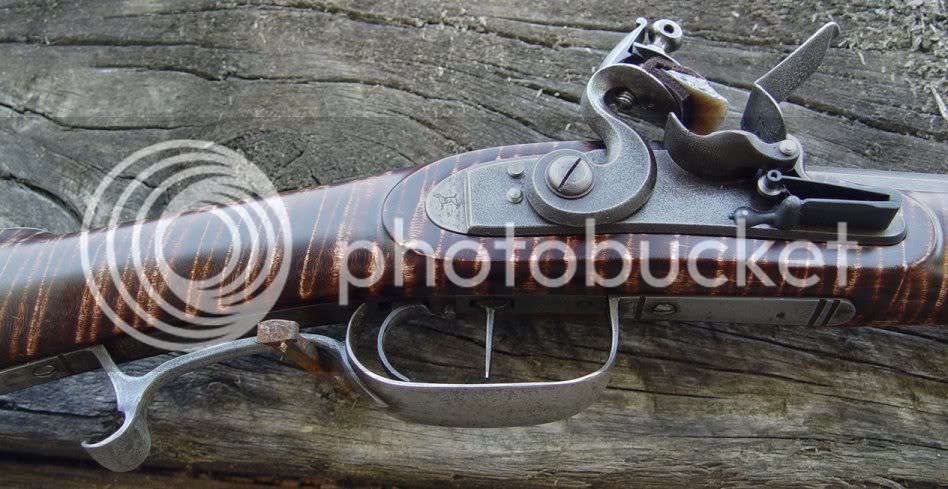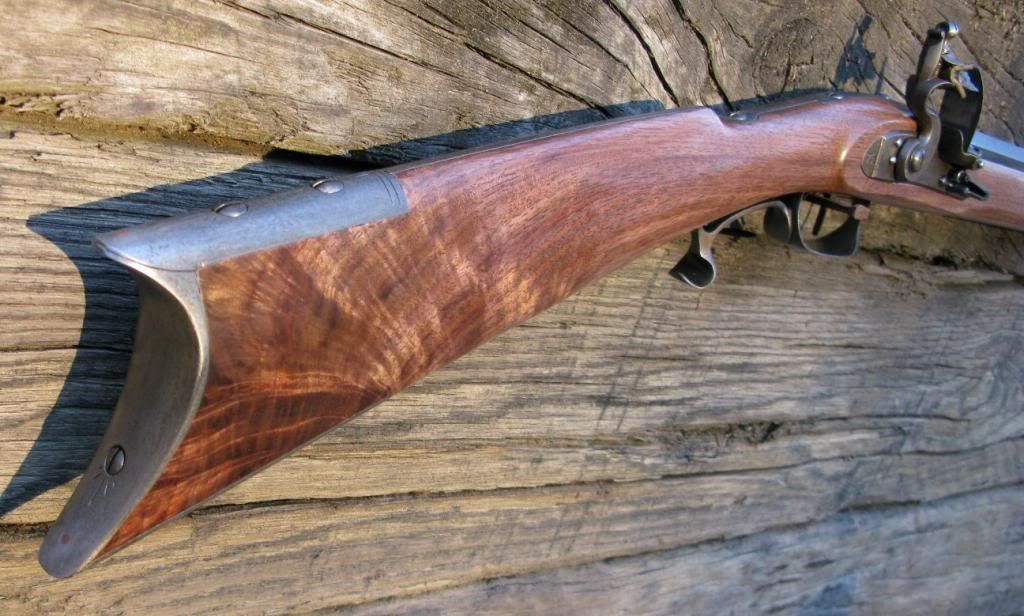I am sure at times some would do anything to make a sale, and that may include trying to burn fake a stripe on a stock. But I do not think it was a common practice to Burn stocks, nor have I found any evidence to indicate such. The most well known maker of Fauz striping of stocks was Leman, and he did it with a special brush & stain or ink if I remember correctly.
I helped some guys cook a bunch of Boston Butts one time to sell for Charity, and was asked to bring a couple rifles to show the guys helping. This is one of the rifles I took to show.



One of the ol gents there Insisted I had burnt this stock with rope or wire or something, cause he had heard it on a Documentary on the History Channel about burning these stripes on rifles & selling them to the Indians. He insisted NO WAY was this striping natural & just enhanced with stain. I HAD to have burned it.
So the next day, I went back & 8" of the cut off forestock of this rifle, still in the block & untouched except sanded. I stained it right in front of him. :idunno: Then rubbed it down briskly with a rag & wet it with some Tru-Oil. B.S. Now he says I Prebaked it with some chemical to make the stripes......

When some people make up their minds, there is no changing it, no matter what ya do. And after all, he did see it on TV...... :slap:
Keith Lisle
PS: Oh, and he said I bleached this walnut stock to give this "Starburst Effect", he called it. Now if I could get him to Tell Me how to do it, I could end up rich !!

PSS: Burning & branding designs in Hawk handles was well known & many historic pieces are displayed to show it.









